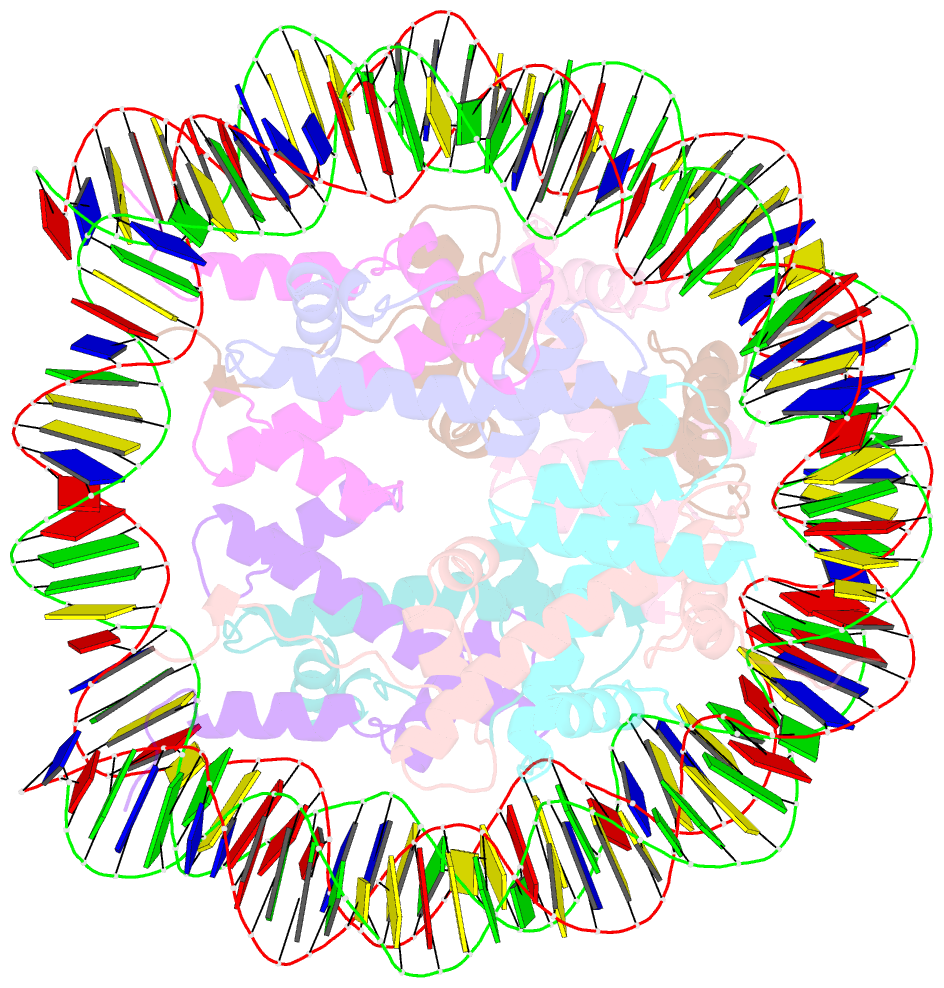Summary information and primary citation
- PDB-id
- 8kb5; SNAP-derived features in text and JSON formats;
DNAproDB
- Class
- DNA binding protein
- Method
- cryo-EM (2.26 Å)
- Summary
- cryo-EM structure of the human nucleosome containing h3.8
- Reference
- Hirai S, Kujirai T, Akatsu M, Ogasawara M, Ehara H, Sekine SI, Ohkawa Y, Takizawa Y, Kurumizaka H (2023): "Cryo-EM and biochemical analyses of the nucleosome containing the human histone H3 variant H3.8." J.Biochem., 174, 549-559. doi: 10.1093/jb/mvad069.
- Abstract
- Histone H3.8 is a non-allelic human histone H3 variant derived from H3.3. H3.8 reportedly forms an unstable nucleosome, but its structure and biochemical characteristics have not been revealed yet. In the present study, we reconstituted the nucleosome containing H3.8. Consistent with previous results, the H3.8 nucleosome is thermally unstable as compared to the H3.3 nucleosome. The entry/exit DNA regions of the H3.8 nucleosome are more accessible to micrococcal nuclease than those of the H3.3 nucleosome. Nucleosome transcription assays revealed that the RNA polymerase II (RNAPII) pausing around the superhelical location (SHL) -1 position, which is about 60 base pairs from the nucleosomal DNA entry site, is drastically alleviated. On the other hand, the RNAPII pausing around the SHL(-5) position, which is about 20 base pairs from the nucleosomal DNA entry site, is substantially increased. The cryo-electron microscopy structure of the H3.8 nucleosome explains the mechanisms of the enhanced accessibility of the entry/exit DNA regions, reduced thermal stability, and altered RNAPII transcription profile.





